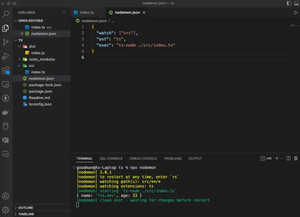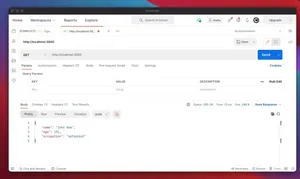Overview
Sequelize.js is a popular Node.js ORM (Object-Relational Mapping) library, which allows developers to interact with relational databases like MySQL, PostgreSQL, and SQLite in an asynchronous, promise-based manner. It provides various hooks that are called at different phases of query execution, and ‘beforeCreate’ and ‘beforeUpdate’ are two such lifecycle hooks that can be extremely useful in managing data consistency, handling business logic, or implementing automatic value updates.
This tutorial covers the ‘beforeCreate’ and ‘beforeUpdate’ hooks, showing how to use them effectively with different code examples ranging from simple use-cases of validating or transforming data to complex scenarios involving asynchronous operations.
Understanding Sequelize.js Hooks
Hooks, also known as lifecycle events, are functions which are called before and after calls in Sequelize to methods like create, update, and destroy. They serve as checkpoints while managing data, at which various tasks such as validation, transformation, etc., can be performed.
The ‘beforeCreate’ Hook
The ‘beforeCreate’ hook is performed before an instance is sent to the database as a new record.
User.beforeCreate((user, options) => {
user.password = hashPassword(user.password);
});
The ‘beforeUpdate’ Hook
Similarly, the ‘beforeUpdate’ hook occurs before an instance’s information is updated in the database.
User.beforeUpdate((user, options) => {
if (user.changed('password')) {
user.password = hashPassword(user.password);
}
});
Using Hooks for Data Validation
Data validation is crucial to maintaining data integrity. Here’s how you can use these hooks to ensure only valid data gets saved to your database.
Example: Enforcing Email Format
const isEmailValid = (email) => { /* ... email validation logic ... */ };
User.beforeCreate((user, options) => {
if (!isEmailValid(user.email)) {
throw new Error('Invalid email format');
}
});
Transforming Data Before Saving
It’s often necessary to transform data before saving it. Hooks can help you automate this process.
Example: Capitalizing Names
const capitalize = (name) => name.charAt(0).toUpperCase() + name.slice(1).toLowerCase();
User.beforeCreate((user, options) => {
user.firstName = capitalize(user.firstName);
user.lastName = capitalize(user.lastName);
});
Complex Asynchronous Operations with Hooks
For complex operations, such as those requiring IO operations or calls to external services, you can return a promise within your hook to ensure that Sequelize waits for the operation to complete before proceeding.
Example: Fetching Remote Data
const getRemoteData = async () => {
// ... fetch data asynchronously ...
};
User.beforeCreate(async (user, options) => {
const data = await getRemoteData();
user.additionalInfo = data;
});Handle errors in hooks with caution because they might cause a transaction to fail or propagate further affecting subsequent operations.
Conclusion
The ‘beforeCreate’ and ‘beforeUpdate’ hooks in Sequelize.js provide a powerful toolset for executing operations at critical moments in the data lifecycle. Using them requires understanding the asynchronous nature of JavaScript and proper error management to ensure the integrity of your application. This guide has shown how to implement these hooks, from simple validations to transformations and complex asynchronous tasks, enhancing functionality and security of your Sequelize.js applications.

